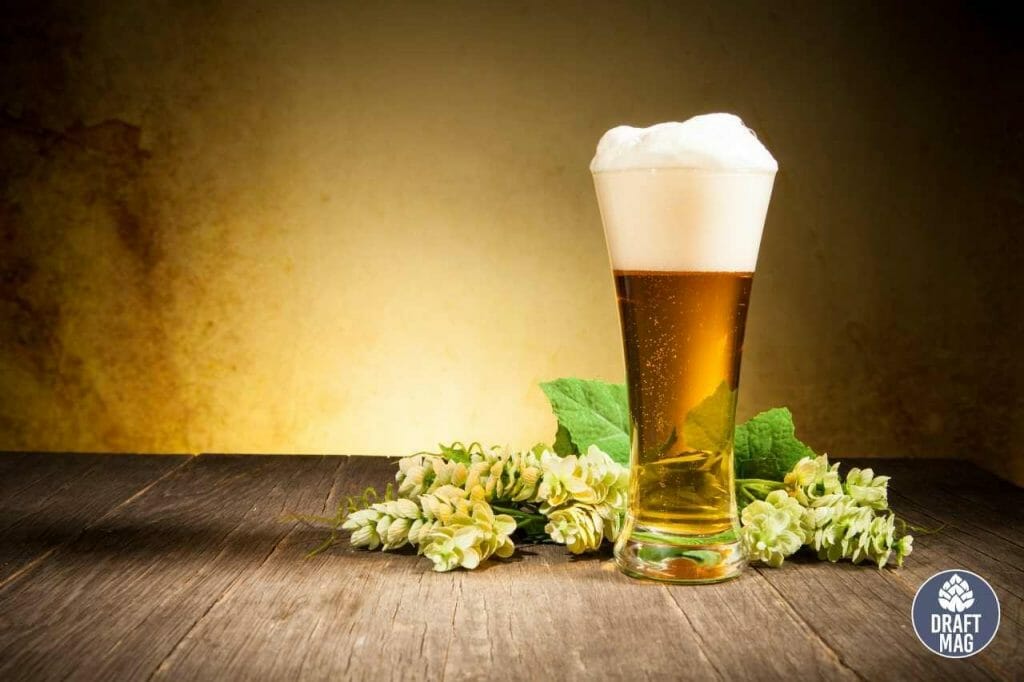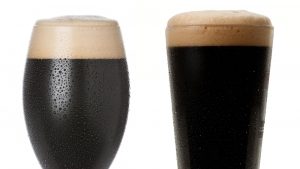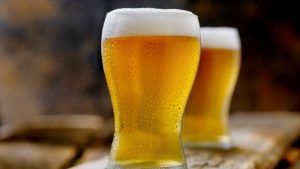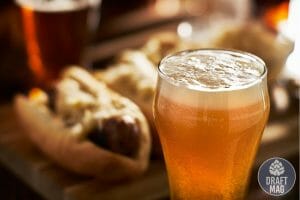Ale vs Beer: The Big Difference Every Beer Lover Should Know
 Ale vs Beer comparison may seem confusing since ales are a subgroup of beer. To start with, it is pertinent to mention that all beers are either Ale or Lager. However, due to the worldwide popularity of lagers, most countries use the term beer interchangeably for a lager. This comparison guide touches such interesting facts and differences between these two popular beer styles.
Ale vs Beer comparison may seem confusing since ales are a subgroup of beer. To start with, it is pertinent to mention that all beers are either Ale or Lager. However, due to the worldwide popularity of lagers, most countries use the term beer interchangeably for a lager. This comparison guide touches such interesting facts and differences between these two popular beer styles.
Quick Comparison Table
| Characteristics | Ales | Beer (Lagers) |
| Yeast | Saccharomyces cerevisiae | Saccharomyces pastorianus |
| Fermentation | Top-fermentation | Bottom-fermentation |
| Fermentation Temperature | Warmer Temperature (60 -70 degrees Fahrenheit) | Cold Temperature (35–50 degrees Fahrenheit) |
| Fermentation Duration | Quicker (3-5 Weeks) | Longer (6-8 Weeks) |
| Flavor | Fruiter and round on the palate | Clean and crisp taste |
What Are the Differences Between Ale and Beer?
The main difference between ale and beer is how they are fermented, as ales use top-fermenting yeast (Saccharomyces cerevisiae) that thrives at a warm temperature (60 -70 F) during fermentation, whereas lagers use bottom-fermenting yeast (Saccharomyces pastorianus) that thrives at colder temperatures (35–50 F).
What Is Ale Best For?
Ales are best for those who are looking for an alcoholic beverage that has a sweet, complex, and rich flavor. Until the introduction of Lager in the 16th century, all beers were ales. Ales are characterized by sweetness, complexity, and rich flavor.
– Brewing Process
Ales are fermented using top-fermenting yeast (Saccharomyces cerevisiae) that tends to use warmer temperatures (60 to 72 F). Top-fermenting means the yeast gathers at the top of the fermentation and settles at the bottom at the end of the fermentation process.
Due to warmer temperatures, yeast breaks down the sugar into esters and phenols much faster. These fruity and spicy compounds lend a distinct flavor profile to the ales. Furthermore, ales also take less time to mature than lagers. This is the main reason behind all popular craft beer being ales.
– Sensory Profile
There is a common misconception that ales are darker than lagers, but the fact is both beer types could be darker or lighter depending on the malts used. However, the majority of ales tend to be darker and cloudier.
Esters and spicy compounds lend ales sweet and spicy aromas resembling banana, clove, vanilla, and more.
Ales are commonly full-bodied with a sweeter and fruity flavor profile. They also showcase robust hop flavor with more bitterness.
– Ingredients
Malts, hops, water, and yeast are the common ingredients in both ales and lagers. However, in addition to the type of yeast, the hop content also differs in both beer types. As ales are fermented at warmer temperatures, more hops are required to stabilize and preserve the brew. Furthermore, bitterness in ales results from faster and warmer fermentation processes.
Ales have a sweeter, spicy, and fruity flavor profile due to the presence of Esters and Phenol compounds. They also showcase robust hop flavor with bitterness on the high side.
– Food Pairings
Ales are rich and complex beers, so cheesy and saucy dishes go pretty well with this beer style. For instance, hop-forward IPAs par well with sliders, cheeseburgers, or simply cheese. Similarly, pair wheat beers with grilled fish or any other Caribbean foods. Stouts can be paired with meat and rich desserts like chocolate cakes.
– Major Ale Styles
Here are some of the most common styles of ale:
- Brown ale: dark amber or brown colored, notes of nuts, caramel, and chocolate with subtle hops.
- Pale ales: pale in color with a well-balanced hops and malts flavor profile.
- India pale ale: a hoppy pale ale with higher alcohol content.
- Imperial IPA: big, bold, hoppy IPA high in ABV and hops flavor and aroma.
- Blonde ale: light body and flavor with mild sweetness and biscuity notes.
- Barley Wine: amber to dark brown in color, aged like wine, very high in ABV, and has complex notes of fruits and hops.
- Porter: very dark brown, marked by chocolate and caramel notes. Hops profile ranges from mild to intense in different styles.
- Stout: amber to dark in color like porters, noticeable roasting flavors like coffee, barley, and chocolate. Sweet and dry with a thick white head.
- Wheat ale or wheat beers: also known as a Witbier, very pale with a cloudy appearance. Esters lend spicy and sweet notes.
Others include Hefeweizen, Sour Ales, Golden ale, Scotch ale, and Belgian ales.
– Overall
Beer is broadly classified into two basic categories: Ale and Lager (or Lager Beer). Ale, a beer subcategory, is rich, more complex, and hop-forward than lagers. It also has a higher alcohol content (ABV), and Comparative analysis of ale vs lager shows that ales are stronger than lager beers in alcohol content and hop bitterness. It is because ales are fermented at warmer temperatures than lagers.
What Is Beer (Lager) Best For?
Lagers are best for those who are looking for a crisp, refreshing, and thirst-quenching alcoholic drink. The lager beer’s smooth, crisp, and clean profile make it the most consumed beer style in the world.
– Brewing Process
The bottom-fermenting yeast “Saccharomyces Uvarum ” is used to ferment lagers. This yeast strain is very delicate and requires cold temperatures (35–50 F) and a still environment for an extended period to attenuate. Furthermore, this yeast is so delicate that the slightest variations in the fermentation environment result in variations in flavors and quality.
Unlike ales, this strain doesn’t gather at the top before settling at the bottom. This is why lagers are not the beer of choice for homebrewers and craft breweries. Lagers also go through additional cold conditioning that would have a strong effect on the final product.
– Sensory Profile
Generally, lagers are lighter and clear than ales. But, again, the color of any beer depends on the type of malts used. Deep-roasted malts lend a dark color to the brew, whereas light-roasted malts lend pale colors.
Lagers do not showcase complex, sweet, and spicy aromas of esters and phenols. However, depending on the type and quantity of hops and malts used, lagers can also showcase additional aromas.
Slow fermentation and cold treatment lend lagers a crispier and smoother flavor profile. Compared to ales, they have lower alcohol content. They are also known for their thirst-quenching quality.
– Ingredients
Although all beers contain a common ingredient (hop), only the quantity differs. Due to cold fermentation and conditioning, hops get a chance to showcase their magic without bittering the brew, so lagers tend to be less hoppy than ales.
– Food Pairings
Lagers are easy to drink and are known for their clean, palate-cleansing qualities, so they pair well with saucy, greasy, and spicy food like barbecue wings, Indian curries, and fries. You can further refine your choices depending on the style of lager. For instance, malty Blocks go well with bread and meat combinations.
– Major Lager Styles
Here are some of the most popular lager styles:
- German Pilsner: color ranges from straw to pale gold, marked by subtle hops and malted barley flavors. Bitter taste and vibrant floral aroma.
- Pale Lager: the most consumed worldwide beer style, this light straw color brew is crisp and malty with a subtle hops bitterness in the background. It is a thirst-quenching beer that ends with a dry and clean finish.
- Bavarian Dark Lager (Dunkel style): deep copper to dark brown with a reddish tint, a rich Munich malt forward beer with notes of chocolates, toasted bread, nuts, and caramel. Hops bitterness is not prominent.
- German schwarzbier (dark lager): Often referred to as black lagers, schwarzbier is dry, dark, and roast prominent; mild roasted malt character with low bitterness; low to medium levels of malt flavor and aroma.
- Doppelbock: It is a full-bodied, stronger, and with high alcohol content beer; low levels of hops and bitterness; darker in color.
- German-style bock: copper or amber colored with malty and sweet notes. Toasty flavors mark this strong beer.
- Marzen: Originated in Germany, traditionally brewed in March (Marz), lagered in caves, and served in autumn. Malt forward beer with a balance of clean, hop bitterness.
– Overall
Lagers are fermented in colder temperatures with bottom-fermenting yeasts (Saccharomyces pastorianus). The word “ Lager” comes from the German word “lager,” which translates “to store” as they were originally stored in caves in cold months for fermentation and cold storage.
This beer subcategory is known for its crisp and thirst-quenching qualities. It is no surprise that all top-selling beers globally are lagers. Maybe this is the reason why people commonly refer to lagers as beer. Here is the brewing process and some common characteristics of lagers.
FAQ
– Is Ale the Same as Beer?
Technically yes; ales are considered as beers, but not all beers are considered ales. Ale and lager are two subcategories of beer differentiated based on their fermentation technique. Ale beers are fermented at warmer temperatures using top-fermenting yeast, whereas lager beers are fermented using bottom-fermenting yeast at colder temperatures.
Endnote
As evident from this ale vs beer review, the major difference between an ale and lager beer is in their fermentation technique. Ales use top-fermenting yeast (Saccharomyces cerevisiae) that thrives at warm temperatures (60 – 70 F), whereas lagers use bottom-fermenting yeast (Saccharomyces pastorianus) that thrives in cold temperatures (35 – 50 F).
Ales’ fermentation at warmer temperatures lends a rich, complex, and sweet ester flavor profile. On the other hand, cold fermentation gives lagers a clean, crisp, and smooth flavor profile. Despite their differences, both beers are unique and delicious in their own way. However, when it comes to satisfying thirst, brightening up parties, or enjoying hot sunny days, lagers are almost always the beer of choice.






